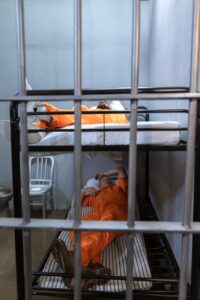Taxpayers incarcerate addicts
Society needs to understand the financial trauma families go through. According to the National Institute on Drug Abuse, substance abuse costs American taxpayers $600 billion annually.
All I felt was fear.
I stood in front of my friend, the first real friend I’d ever had. She was high, disheveled and skinnier than I had ever seen her before, and I realized there was nothing I could do to save her from herself.
I was not equipped to handle the deep despair she felt or help her navigate the trauma of her past. I left her house that day worried for her two little boys, my godsons.
I never saw their mother alive again.
Her boys were one and six. Only a few years younger than their mother when she was first incarcerated.
Britney was only 28 years old when addiction claimed her life. In the three years that have separated me from the day I learned from her father the terrible news, I have come to realize it is time for us as a society to invest in social programs aimed at helping individuals struggling with addiction instead of incarcerating them.
Maybe if we had, she’d still be here. Maybe if we do, we can save the life of someone else’s friend, someone else’s mother.
Alicia Mejia felt the same way when her husband became addicted to heroin.
“I felt alone – I didn’t know what resources were out there,” Mejia said.
Society needs to understand the financial trauma families go through. According to the National Institute on Drug Abuse, substance abuse costs American taxpayers $600 billion annually. Treatment is less expensive than the alternatives. On average it costs $4,700 per patient for a year of methadone—a therapy used to treat the side effects of withdrawal for people addicted to heroin or other opiates. In contrast, it costs $24,000 for one addict to be incarcerated for a year.
The last time I saw her, Brittney was experiencing what so many others who are addicted have experienced — isolation and hopelessness.
“The opposite of addiction is connection,” said Darlene Schultz, who runs support groups for the families of addicts at Utah Support Advocates for Recovery Awareness. “If there is no connection it will be hard to be successful.”
Schultz was left financially ruined after putting her two sons into treatment. She now runs a program called Community Reinforcement and Family Training, and it is important to her that the program is free for all families needing help.
“We have spent enough as family members and we shouldn’t have to pay for treatment,” she said.
Recovering addict Jennifer Harris agrees that there should be financial assistance for addicts. Harris works as a criminal justice liaison for a non-profit recovery center in the Salt Lake area called Odyssey House. She goes into the prison and connects with addicts searching for a recovery program. For many addicts this saves lives because it bridges the gap between prison and life after incarceration.
“This can be a scary time for people and I want to make sure if someone wants help they have it,” Harris said.
If we stop incarcerating so many addicts, we can start treating them.
If we do, we could save a lot of people who are just like my friend.




